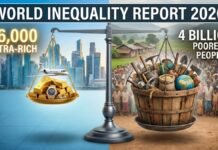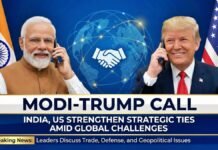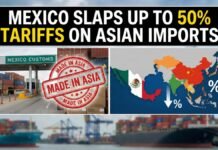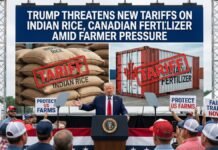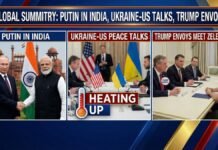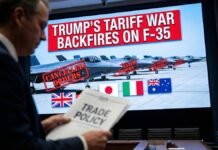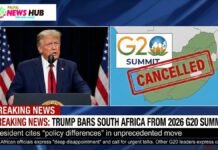
Key Points
- Tariff Rollout Date: Donald Trump’s reciprocal tariffs, targeting trade imbalances, will take effect on April 2, 2025.
- ‘Dirty 15’ Nations: Countries with significant trade deficits with the U.S., including China, India, the EU, and Canada, are in focus.
- Global Impact: Experts warn of a potential trade war, market instability, and higher costs for consumers and businesses.
- Economic Strategy: Trump aims to reduce the U.S. trade deficit and bolster domestic manufacturing through these tariffs.
New Delhi: Former U.S. President Donald Trump is set to implement his most aggressive trade policy yet with the introduction of reciprocal tariffs on April 2, dubbed “Liberation Day.” These tariffs aim to address what Trump describes as “unfair trade practices” by countries running significant trade surpluses with the U.S.
The so-called “Dirty 15” nations countries identified for their trade imbalances include economic giants like China, India, Japan, South Korea, Canada, Mexico, Vietnam, Taiwan, and the European Union. The tariffs will match or exceed the duties these nations impose on American exports.
Trump has emphasized that no country will be exempt from this policy, even long-standing allies such as Canada and the EU. His administration argues that these measures are necessary to protect American industries and reduce the $1.2 trillion trade deficit recorded in 2024.
Why Is This Move Controversial?
While Trump views these tariffs as a way to restore fairness in global trade, critics warn of severe repercussions:
- Global Trade War: Countries like China and Canada have already announced retaliatory tariffs on U.S. goods, raising fears of escalating tensions.
- Market Instability: Stock markets worldwide have reacted negatively to the announcement, with major indices experiencing sharp declines amid uncertainty.
- Higher Consumer Costs: Tariffs on imports will likely increase prices for everyday goods in the U.S., from electronics to automobiles and groceries.
- Impact on Industries: American automakers like Ford and General Motors have warned that a 25% tariff on vehicles could disrupt supply chains and significantly raise car prices. Similarly, agricultural exporters fear losing key markets due to retaliatory measures from affected countries.
Who Are the ‘Dirty 15’?
The “Dirty 15” refers to nations identified by Treasury Secretary Scott Bessent for having large trade surpluses with the U.S., often coupled with high import duties on American goods:
| Country | Key Trade Deficit Areas |
|---|---|
| China | Electronics, machinery |
| European Union | Automobiles, wine |
| India | Pharmaceuticals, textiles |
| Canada | Energy products |
| Mexico | Auto parts |
These countries are bracing for significant economic impacts as Trump’s tariffs take effect.
Economic Implications
Economists are divided over whether Trump’s strategy will strengthen the U.S. economy or destabilize global markets:
- Short-Term Pain: Tariffs are expected to raise costs for American businesses reliant on imported goods, leading to higher consumer prices and potential job losses in export-dependent industries.
- Long-Term Goals: Trump hopes these measures will incentivize domestic manufacturing by making imported goods more expensive and encourage foreign nations to lower their own tariffs on U.S. exports.
However, studies suggest that similar tariff policies during Trump’s first term disproportionately hurt U.S. consumers and dampened global growth.
Reactions from Around the World
- China: Beijing has already imposed retaliatory tariffs on key U.S. exports like soybeans and pork while expanding restrictions on American companies operating in China.
- Canada & Mexico: Both nations have announced countermeasures targeting American goods worth billions of dollars in response to earlier tariff hikes on steel and aluminum imports.
- India: New Delhi is reportedly considering reducing import duties on select items like auto parts to avoid further escalation.
What Comes Next?
Trump’s Liberation Day tariffs signal a dramatic shift in global trade dynamics:
- Negotiation or Escalation? Some experts believe these tariffs are a pressure tactic aimed at forcing renegotiations of existing trade agreements rather than a permanent policy shift.
- Duration of Tariffs: It remains unclear how long these measures will stay in place or whether they will be scaled back if countries agree to new terms with the U.S.
- Impact on Global Economy: The International Monetary Fund (IMF) warns that prolonged trade conflicts could reduce global GDP growth by up to 0.5% through 2026.
As April 2 approaches, all eyes are on how affected nations respond and whether this move marks a turning point for international trade or the beginning of prolonged economic conflict.






